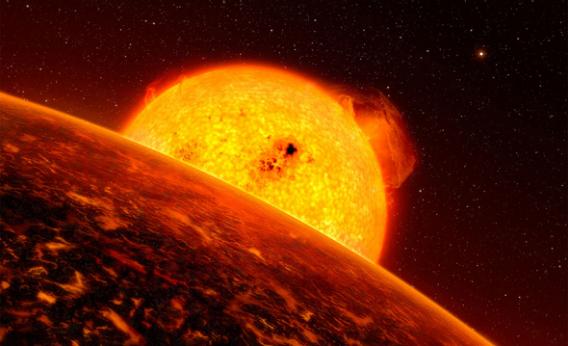Create a free profile to get unlimited access to exclusive videos, sweepstakes, and more!
Crash Course Astronomy: To Explore Strange, New Worlds

One of my favorite topics in astronomy is exoplanets: planets orbiting other stars.
Astronomers have been looking for them for decades, and there were lots of false alarms, but no true planets found … until 1992, when pulsar planets were found, and then just a few years later when planets orbiting stars like the Sun were first detected.
I remember the next few years, the arguments that raged over whether these planets were real or not, until an independent observation of one transiting its star clinched the deal. Now, just 23 years later, we have a roster of thousands of such exoplanets, so many that zoological-type classification is possible. The range of planet flavors is huge, showing us that stars make planets with relative ease.
How wonderful is that?
It’s why this week’s Crash Course Astronomy episode on exoplanets was so much fun to put together. Just thinking about this topic gets my brain fired up. Maybe I can share that feeling with you:
As you may recall, this episode was supposed to go up last week, and in fact did, but we quickly took it down after we discovered an error in one of the animations. We’d rather get things right, so we fixed it and here it is all shiny and fully functional.
If you’re curious, the problem came about due to barycenters. When a massive object like a planet orbits another massive object like a star, it’s more correct to say they both orbit around their common center of mass, called the system barycenter. The animation you see here demonstrates it.
As you can see in the animation, the planet makes a big circle and the star makes a small one. And if you watch closely you’ll see they’re always on opposite sides of the barycenter; when the planet is on the left of its orbit, the star is 180° around on its right.
The problem we had was that we mistakenly had the two objects on the same sides of their respective orbits, so (for example) both were on the left at the same time. It was a subtle enough mistake that I totally missed it, but of course the more eyes you have on something the more likely someone will notice, and many commenters did. I personally thank those who pointed it out and freely admit we screwed that part up.
Part of science, you see, is owning up to errors. The whole point of the scientific endeavor is to approach the truth, the reality of things, ever more closely. If you can’t admit your mistakes, you’ll carry them along with you, and you’ll wind up moving in the wrong direction. In this case our error was one of display, not (directly) content, but the concept still applies.
And we certainly didn’t want to confuse anyone watching and trying to figure this out! You’re on this journey, too, and the reason I do all this is to take you along, share my joy of science, and hope that you too will delight in learning more about the Universe and seeing it as it is.
Per gaudium, ad astra.














